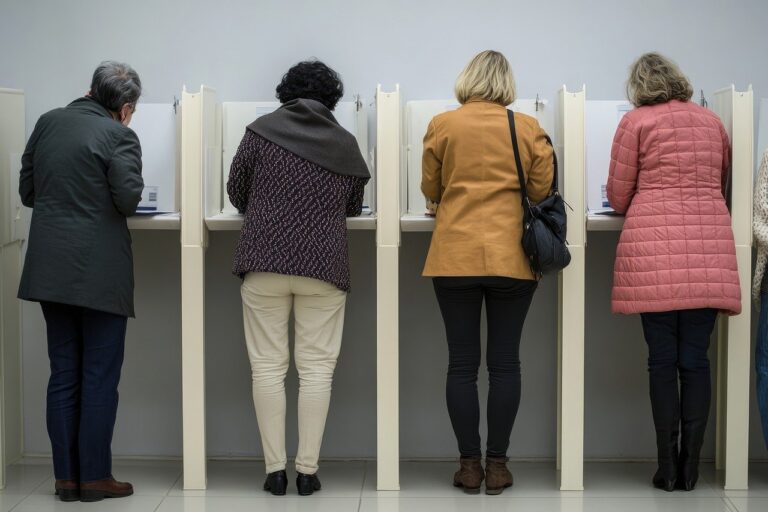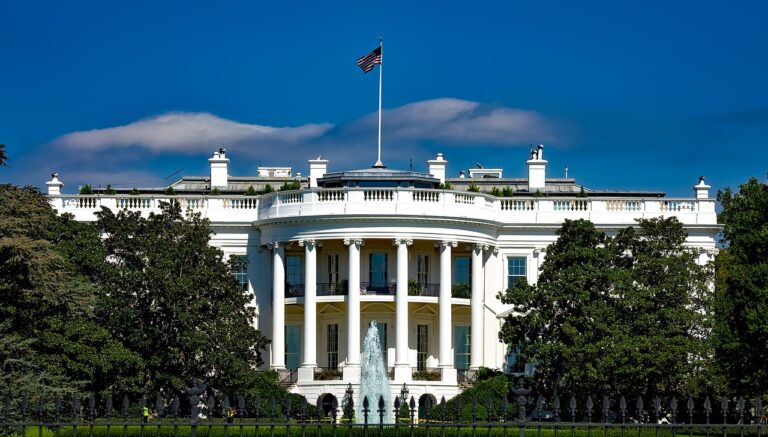Peace President United Blog
Reinventing the Ballot: 12 Game-Changing Ideas to Revolutionize Voting

Voting is the cornerstone of democracy, but in an age of rising polarization and voter dissatisfaction, it’s clear the system needs a refresh. While Ranked Choice Voting (RCV) is making waves, it’s just the tip of the iceberg. Imagine a future where voting is more inclusive, fair, and representative—where every voice truly counts.
From cutting-edge tech solutions to bold new approaches, here are 12 innovative ideas that could reshape how we vote and redefine democracy for generations to come.
1. Proportional Representation (PR)
- How It Works: Instead of electing one representative per district, proportional representation allocates seats in legislative bodies based on the percentage of votes each party or group receives.
- Advantages:
- Encourages diverse political representation.
- Reduces the dominance of a two-party system.
- Gives smaller parties and independent candidates a fair chance.
- Example: Many European countries, including Germany and Sweden, use PR systems to ensure their legislatures reflect the full spectrum of voter preferences.
2. Approval Voting
- How It Works: Voters can select (“approve of”) multiple candidates on the ballot. The candidate with the most approvals wins.
- Advantages:
- Reduces vote-splitting, allowing voters to support multiple candidates without fear of “wasting” a vote.
- Simple to implement and understand.
- Encourages more centrist and broadly appealing candidates.
- Example: Used by organizations like the United Nations and in some local elections in the United States (e.g., Fargo, North Dakota).
3. STAR Voting (Score Then Automatic Runoff)
- How It Works: Voters score candidates on a scale (e.g., 0–5). The two highest-scoring candidates then enter an automatic runoff, with the candidate preferred by the majority winning.
- Advantages:
- Combines elements of scoring and ranking for nuanced voter expression.
- Reduces polarization by rewarding broadly appealing candidates.
- Transparent and efficient.
- Example: Advocated by reform groups in the U.S., though not widely implemented yet.
4. Deliberative Polling Integration
- How It Works: Before elections, randomly selected citizens participate in structured discussions about key issues and candidates, facilitated by experts. Their findings are presented to the public for informed decision-making.
- Advantages:
- Promotes informed voting by combating misinformation and polarization.
- Gives citizens a direct voice in shaping the electoral conversation.
- Example: Successfully piloted in places like Iceland and Texas for community decision-making.
5. Online Voting with Blockchain Security
- How It Works: Secure online voting systems powered by blockchain technology ensure voter anonymity and prevent tampering or fraud.
- Advantages:
- Expands accessibility, especially for remote or disabled voters.
- Offers transparent and auditable election results.
- Challenges:
- Requires robust cybersecurity measures and widespread trust in technology.
- Example: Estonia has pioneered secure online voting for national elections.
6. Multi-Winner Voting
- How It Works: Elects multiple representatives in larger districts using systems like Single Transferable Vote (STV), where voters rank candidates, and excess votes transfer to other candidates to achieve proportional outcomes.
- Advantages:
- Ensures minority groups are represented.
- Reduces the dominance of any single party or viewpoint.
- Example: Used in Ireland and parts of Australia.
7. Weighted Voting by Issue
- How It Works: Voters allocate “weights” or priorities to their votes on specific issues or candidate attributes they care most about.
- Advantages:
- Allows voters to express the intensity of their preferences.
- Prevents single-issue dominance by emphasizing balanced platforms.
- Challenges:
- Complex to implement and explain.
- Requires education to ensure equitable use.
8. Universal Participation Incentives
- How It Works: Encourages voter turnout through rewards like tax credits, paid voting leave, or entry into lotteries for participants.
- Advantages:
- Increases participation rates, particularly among underrepresented groups.
- Encourages habitual voting.
- Challenges:
- Must be carefully designed to avoid coercion or legal challenges.
9. Citizens’ Assemblies for Pre-Election Issue Debate
- How It Works: Panels of randomly selected citizens deliberate on key election issues and publish their consensus findings for voters.
- Advantages:
- Enhances issue-based voting over partisan loyalties.
- Reduces the influence of corporate or special-interest lobbying.
- Example: Canada and Ireland have used similar assemblies to address contentious national issues.
10. AI-Assisted Ballot Simplification
- How It Works: Artificial intelligence tools generate non-partisan summaries of candidates, policies, and key issues for voters to access before voting.
- Advantages:
- Reduces confusion and misinformation.
- Makes ballots more accessible to people with limited political knowledge.
- Challenges:
- Requires safeguards to ensure AI neutrality and transparency.
11. “Unity Ballots” to Foster Collaboration
- How It Works: Parties or candidates agree to appear together on a unity ticket, appealing to voters who prioritize consensus and bipartisanship.
- Advantages:
- Encourages coalition-building and compromise.
- Reduces polarization.
- Example: Similar ideas are proposed in coalition governments worldwide.
12. Rotating Voting District Boundaries
- How It Works: Adjust district boundaries dynamically each election cycle to counteract gerrymandering and ensure fair representation.
- Advantages:
- Prevents entrenched political dominance in certain regions.
- Creates fairer competition.
- Challenges:
- Complex to implement; requires independent oversight.
The Future of Democracy Starts with Us
Reimagining how we vote isn’t just about fixing broken systems—it’s about creating a future where every citizen feels empowered, heard, and represented. These innovative ideas aren’t just solutions; they’re invitations to dream bigger and demand better from our democracy.
The power to transform voting lies in our hands. By embracing bold reforms and encouraging thoughtful experimentation, we can build an electoral system that unites rather than divides, uplifts rather than suppresses, and reflects the true will of the people.
Change starts with vision, and the future of democracy starts with us. Let’s make it happen!



